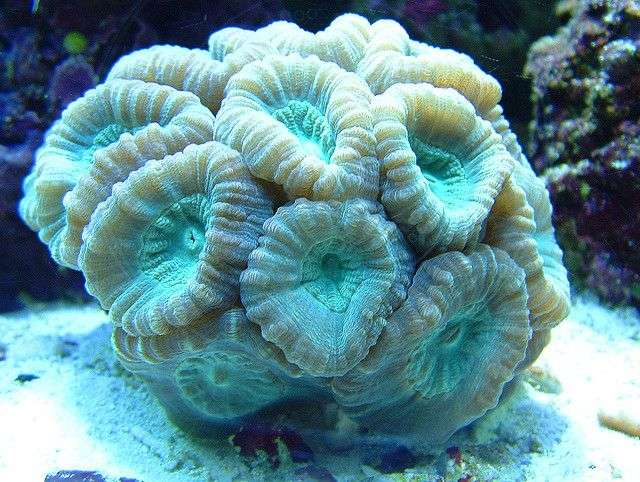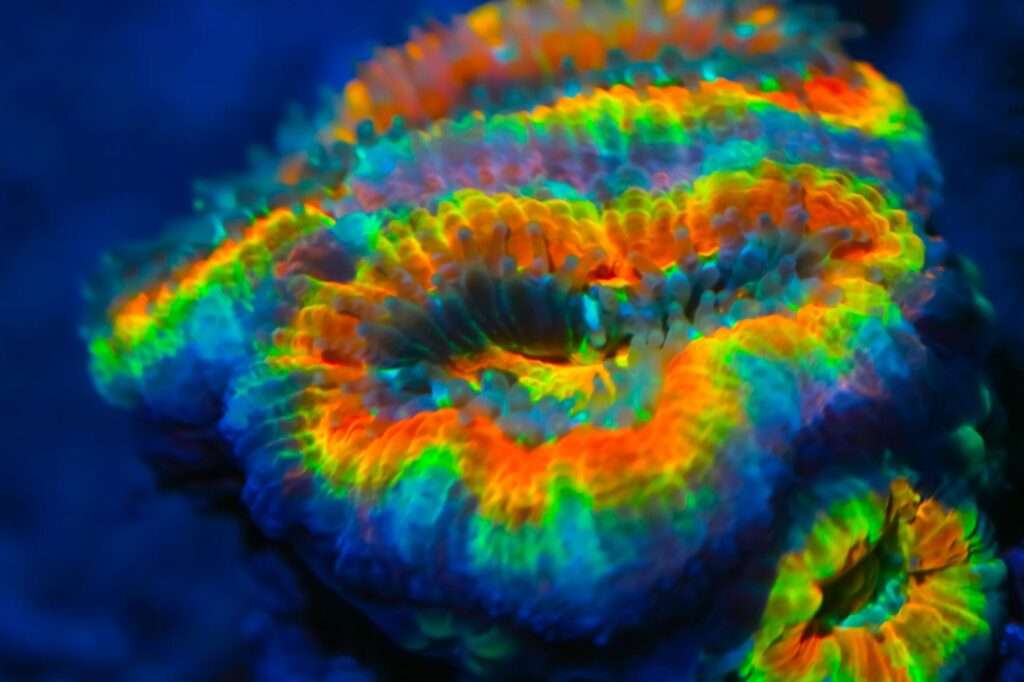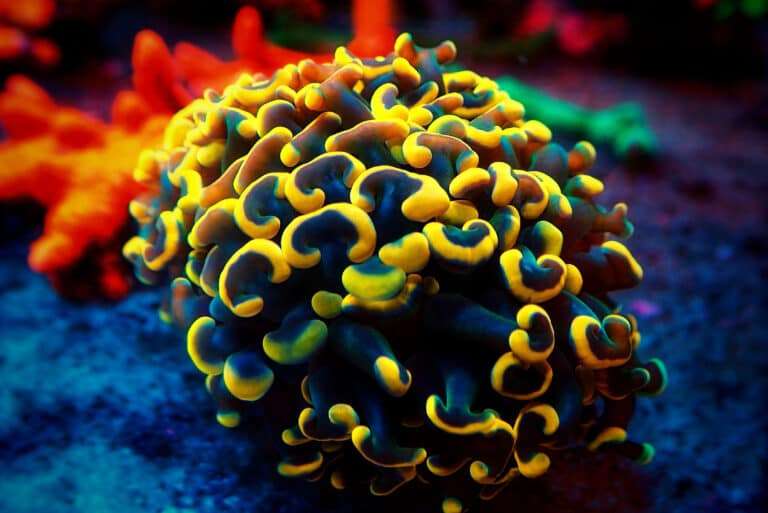
The trumpet-shaped polyps of the Trumpet Coral, grow closely. Trumpet polyps are tightly packed, yet each one grows on its own stalk. The oral disc of this species is “deeper” internally, and the corallite walls are taller comparatively to those of other Caulastrea species, thus the common name.
Each stalk of C. echinulata has a polyp at the top with long, meandering, thin corallites that form a variety of fascinating designs. For instance, corallites can have the form of an hourglass, a stretched-out “B” or “3,” or even more complicated curves and twists, usually with several mouths.
Habitat
Edwards and Haime published a description of the Trumpet Coral Caulastrea echinulata in 1849. In captivity, the C. Echinulata has been reproduced. C. echinulata can be found from Japan in the Western Pacific all the way down to the Great Barrier Reef in Australia. The Caulastrea genus is mainly found in shallow, clear water with surging water flow on protected reef slopes with sandy ground. The exception is C. echinulata, which is found in lagoons and flat substrates in deeper waters than the others.
Morphology
The polyps on top of each branch of the trumpet coral C. echinulata have long, meandering corallites that are slender and lengthy. A stretched-out “3,” an hourglass, a thin, stretched-out “B,” and even more intricate curves and twists, usually with multiple mouths, are just a few examples of how corallite might look. This species is known as a “trumpet” because the oral disc is “deeper” inside and the corallite walls are taller than those of the other species. When you combine that with the fleshy tips of its more oval polyp heads, you get what looks like a “trumpet.” Each corallite or polyp has a crazily formed polyp with twists and turns. Except when young, they are not as frequently spherical or oval. Those amorphous polyps are closely clustered together. The fleshy polyps press together when they have fully expanded, like a solid, non-branching coral. The polyps on the more rounded corallites have a diameter of 10–12 mm.
In Captivity

- Feeding
They get some of their nutrients from a marine alga called zooxanthellae through a symbiotic interaction. They can also take in dissolved organic substances and planktonic creatures as well as food particles from the water column. They can be fed when their tentacles are extended in captivity, but if food is present, they will emerge during the day. Feed mysis, seafood that has been coarsely minced, and items of a similar size. They do require feeding at least twice a week, and regular feedings help them grow very well. It is beneficial to stop the water pumps when feeding.
- Social Interactions and Compatibility
When in close proximity to other corals, Caulastrea corals have the potential to become semi-aggressive, so there should be some space between them. In general, it is not quite correct to suggest that a coral is calm since its tentacles are shorter. The species of Caulastrea are frequently discovered in the wild alongside commensal mollusks, sponges, zoanthids, and other sessile invertebrates. Although zoanthids frequently encroach on coral heads, the coral does not appear to mind.
Table





